
Learning ELK Stack
¥80.65
Build mesmerizing visualizations, analytics, and logs from your data using Elasticsearch, Logstash, and Kibana About This Book Solve all your data analytics problems with the ELK stack Explore the power of Kibana4 search and visualizations built over Elasticsearch queries and learn about the features and plugins of Logstash Develop a complete data pipeline using the ELK stack Who This Book Is For If you are a developer or DevOps engineer interested in building a system that provides amazing insights and business metrics out of data sources, of various formats and types, using the open source technology stack that ELK provides, then this book is for you. Basic knowledge of Unix or any programming language will be helpful to make the most out of this book. What You Will Learn Install, configure, and run Elasticsearch, Logstash, and Kibana Understand the need for log analytics and the current challenges in log analysis Build your own data pipeline using the ELK stack Familiarize yourself with the key features of Logstash and the variety of input, filter, and output plugins it provides Build your own custom Logstash plugin Create actionable insights using charts, histograms, and quick search features in Kibana4 Understand the role of Elasticsearch in the ELK stack In Detail The ELK stack—Elasticsearch, Logstash, and Kibana, is a powerful combination of open source tools. Elasticsearch is for deep search and data analytics. Logstash is for centralized logging, log enrichment, and parsing. Kibana is for powerful and beautiful data visualizations. In short, the Elasticsearch ELK stack makes searching and analyzing data easier than ever before. This book will introduce you to the ELK (Elasticsearch, Logstash, and Kibana) stack, starting by showing you how to set up the stack by installing the tools, and basic configuration. You’ll move on to building a basic data pipeline using the ELK stack. Next, you’ll explore the key features of Logstash and its role in the ELK stack, including creating Logstash plugins, which will enable you to use your own customized plugins. The importance of Elasticsearch and Kibana in the ELK stack is also covered, along with various types of advanced data analysis, and a variety of charts, tables ,and maps. Finally, by the end of the book you will be able to develop full-fledged data pipeline using the ELK stack and have a solid understanding of the role of each of the components. Style and approach This book is a step-by-step guide, complete with various examples to solve your data analytics problems by using the ELK stack to explore and visualize data.
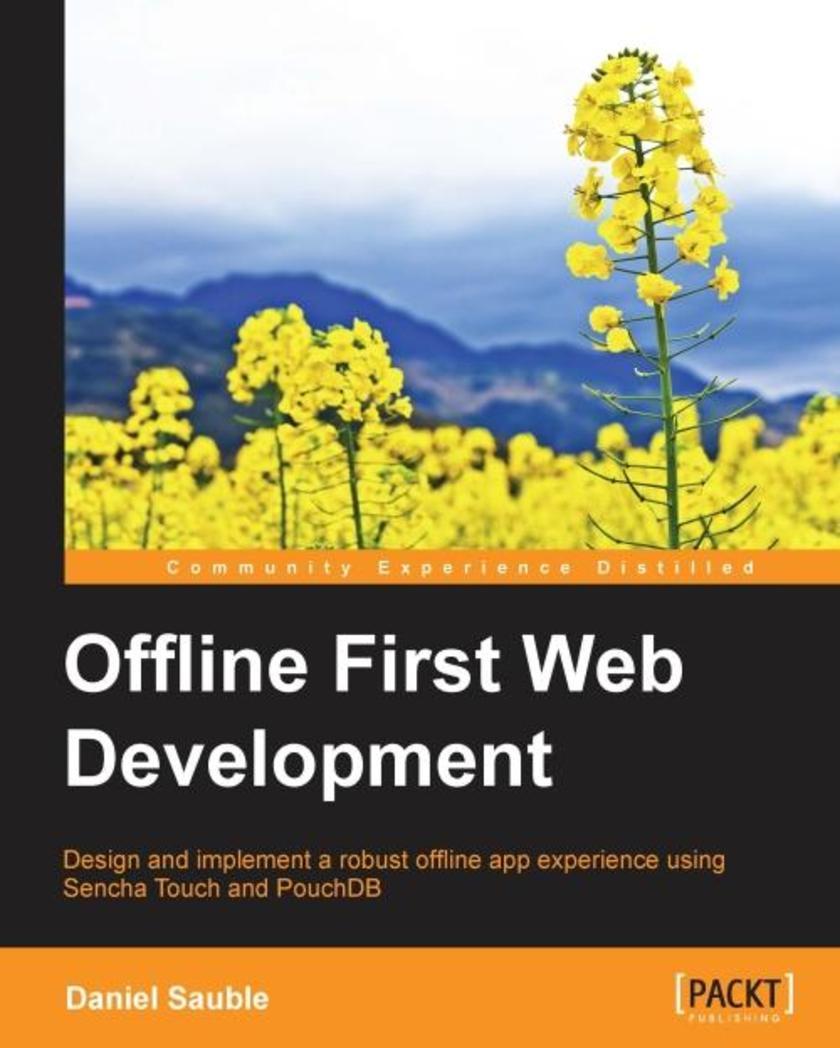
Offline First Web Development
¥80.65
Design and implement a robust offline app experience using Sencha Touch and PouchDB About This Book Understand the design principles behind a well-designed offline experience Create the illusion of being online when you’re really offline Use common libraries to enhance the offline experience of mobile apps with this comprehensive guide Who This Book Is For Do you want to make your app experience more robust and delightfulAre you eager to write apps that cater to a wider audience, not just the Silicon Valley crowdDo you need to persuade your peers that offline-first is a worthwhile development paradigmIf your answer to all or any one of these questions is yes, then this is the book is for you. Some previous coding and command-line experience would be useful, but is not required. What You Will Learn Convince others that the offline-first paradigm is worth doing Design the behavior of the app, taking offline, online, and the transition between those two states into account Implement the offline/online experience that you’ve designed Show the user what’s happening under the hood with online/offline indicators and Good Mobile Messaging Employ various strategies to cope with unreliable network conditions Help the user resolve conflicts related to the “split-brain” problem Choose intelligent defaults based on usage of the app Use point-to-point networking to partially overcome a lack of Internet connectivity In Detail When building mobile apps, it’s easy to forget about the moments when your users lack a good Internet connection. Try this: put your phone in airplane mode and open a few popular apps to see how they handle being offline. From Twitter to Pinterest to Apple Maps, some apps handle being offline better than others, but very few do it well. A poor offline experience will result in frustrated users who may stop using your app, or worse, turn to your competitor’s apps. Expert or novice, this book will teach you everything you need to know about designing and building a rigorous offline app experience. By putting the offline experience first, you’ll have a solid foundation to build upon, avoiding the unnecessary stress and frustration of trying to retrofit offline capabilities into your finished app. This basic principle, designing for the worst case scenario, could save you countless hours of wasted effort. Style and approach This book adopts an iterative approach to designing and building a mobile app, where each chapter builds on the one before, resulting in a fully-functional app that demonstrates the concepts taught, each one of which is explained through the use of an example.
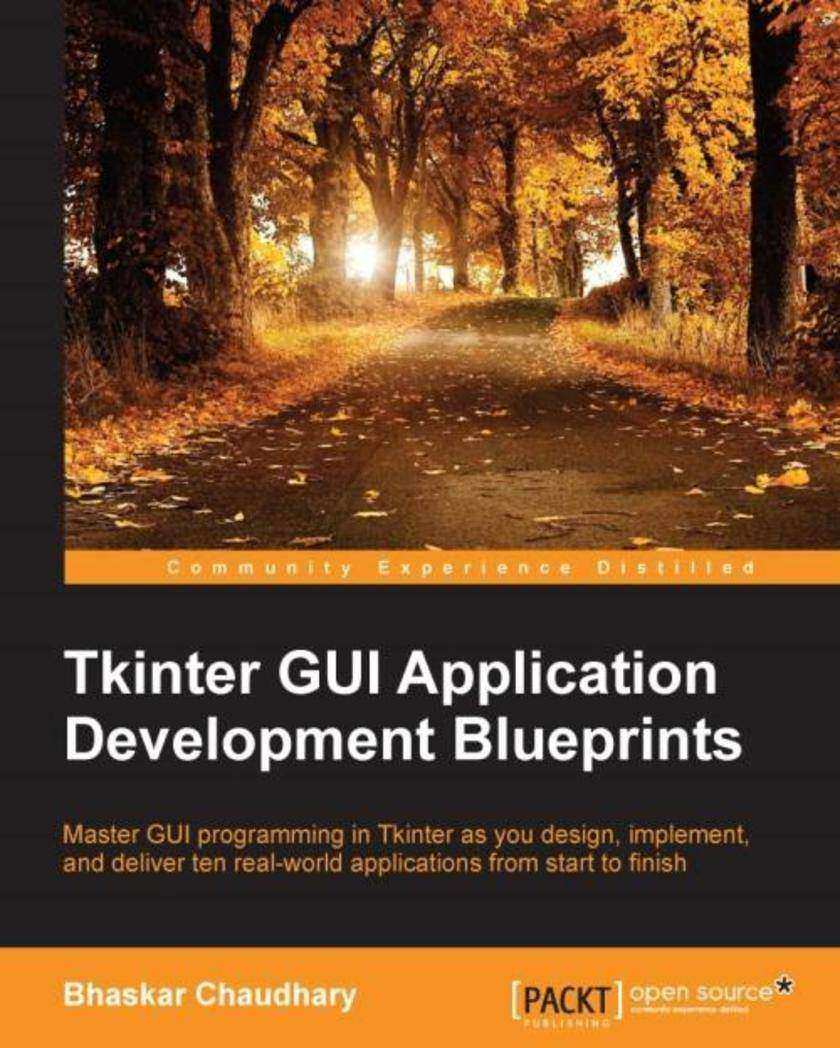
Tkinter GUI Application Development Blueprints
¥80.65
Master GUI programming in Tkinter as you design, implement, and deliver ten real-world applications from start to finish About This Book Conceptualize and build state-of-art GUI applications with Tkinter Tackle the complexity of just about any size GUI application with a structured and scalable approach A project-based, practical guide to get hands-on into Tkinter GUI development Who This Book Is For Software developers, scientists, researchers, engineers, students, or programming hobbyists with basic familiarity in Python will find this book interesting and informative. People familiar with basic programming constructs in other programming language can also catch up with some brief reading on Python. No GUI programming experience is expected. What You Will Learn Get to know the basic concepts of GUI programming, such as Tkinter top-level widgets, geometry management, event handling, using callbacks, custom styling, and dialogs Create apps that can be scaled in size or complexity without breaking down the core Write your own GUI framework for maximum code reuse Build apps using both procedural and OOP styles, understanding the strengths and limitations of both styles Learn to structure and build large GUI applications based on Model-View-Controller (MVC) architecture Build multithreaded and database-driven apps Create apps that leverage resources from the network Learn basics of 2D and 3D animation in GUI applications Develop apps that can persist application data with object serialization and tools such as configparser In Detail Tkinter is the built-in GUI package that comes with standard Python distributions. It is a cross-platform package, which means you build once and deploy everywhere. It is simple to use and intuitive in nature, making it suitable for programmers and non-programmers alike. This book will help you master the art of GUI programming. It delivers the bigger picture of GUI programming by building real-world, productive, and fun applications such as a text editor, drum machine, game of chess, media player, drawing application, chat application, screen saver, port scanner, and many more. In every project, you will build on the skills acquired in the previous project and gain more expertise. You will learn to write multithreaded programs, network programs, database driven programs and more. You will also get to know the modern best practices involved in writing GUI apps. With its rich source of sample code, you can build upon the knowledge gained with this book and use it in your own projects in the discipline of your choice. Style and approach An easy-to-follow guide, full of hands-on examples of real-world GUI programs. The first chapter is a must read as it explains most of the things you need to get started with writing GUI programs with Tkinter. Each subsequent chapter is a stand-alone project that discusses some aspects of GUI programming in detail. These chapters can be read sequentially or randomly depending upon the readers experience with Python.
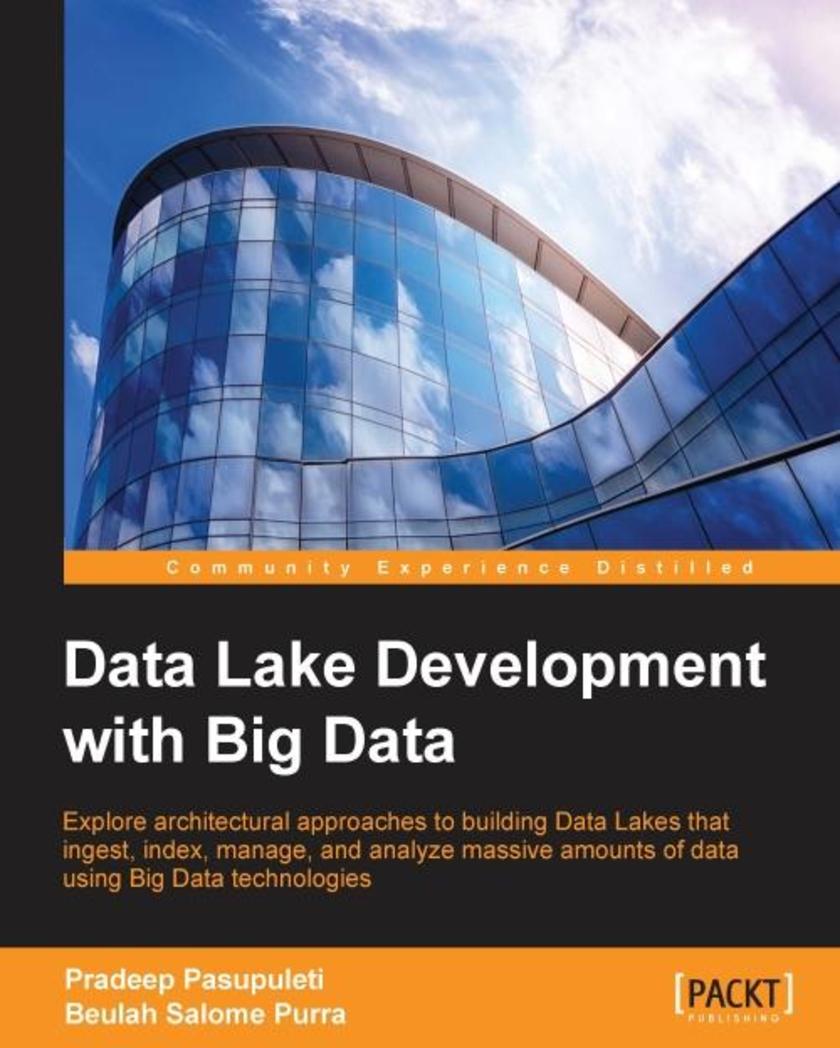
Data Lake Development with Big Data
¥63.21
Explore architectural approaches to building Data Lakes that ingest, index, manage, and analyze massive amounts of data using Big Data technologies About This Book Comprehend the intricacies of architecting a Data Lake and build a data strategy around your current data architecture Efficiently manage vast amounts of data and deliver it to multiple applications and systems with a high degree of performance and scalability Packed with industry best practices and use-case scenarios to get you up-and-running Who This Book Is For This book is for architects and senior managers who are responsible for building a strategy around their current data architecture, helping them identify the need for a Data Lake implementation in an enterprise context. The reader will need a good knowledge of master data management, information lifecycle management, data governance, data product design, data engineering, and systems architecture. Also required is experience of Big Data technologies such as Hadoop, Spark, Splunk, and Storm. What You Will Learn Identify the need for a Data Lake in your enterprise context and learn to architect a Data Lake Learn to build various tiers of a Data Lake, such as data intake, management, consumption, and governance, with a focus on practical implementation scenarios Find out the key considerations to be taken into account while building each tier of the Data Lake Understand Hadoop-oriented data transfer mechanism to ingest data in batch, micro-batch, and real-time modes Explore various data integration needs and learn how to perform data enrichment and data transformations using Big Data technologies Enable data discovery on the Data Lake to allow users to discover the data Discover how data is packaged and provisioned for consumption Comprehend the importance of including data governance disciplines while building a Data Lake In Detail A Data Lake is a highly scalable platform for storing huge volumes of multistructured data from disparate sources with centralized data management services. It eliminates the need for up-front modeling and rigid data structures by allowing schema-less writes. Data Lakes make it possible to ask complex far-reaching questions to find out hidden data patterns and relationships. This book explores the potential of Data Lakes and explores architectural approaches to building data lakes that ingest, index, manage, and analyze massive amounts of data using batch and real-time processing frameworks. It guides you on how to go about building a Data Lake that is managed by Hadoop and accessed as required by other Big Data applications such as Spark, Storm, Hive, and so on, to create an environment in which data from different sources can be meaningfully brought together and analyzed. Data Lakes can be viewed as having three capabilities—intake, management, and consumption. This book will take readers through each of these processes of developing a Data Lake and guide them (using best practices) in developing these capabilities. It will also explore often ignored, yet crucial considerations while building Data Lakes, with the focus on how to architect data governance, security, data quality, data lineage tracking, metadata management, and semantic data tagging. By the end of this book, you will have a good understanding of building a Data Lake for Big Data. You will be able to utilize Data Lakes for efficient and easy data processing and analytics. Style and approach Data Lake Development with Big Data provides architectural approaches to building a Data Lake. It follows a use case-based approach where practical implementation scenarios of each key component are explained. It also helps you understand how these use cases are implemented in a Data Lake. The chapters are organized in a way that mimics the sequential data flow evidenced in a Data Lake.
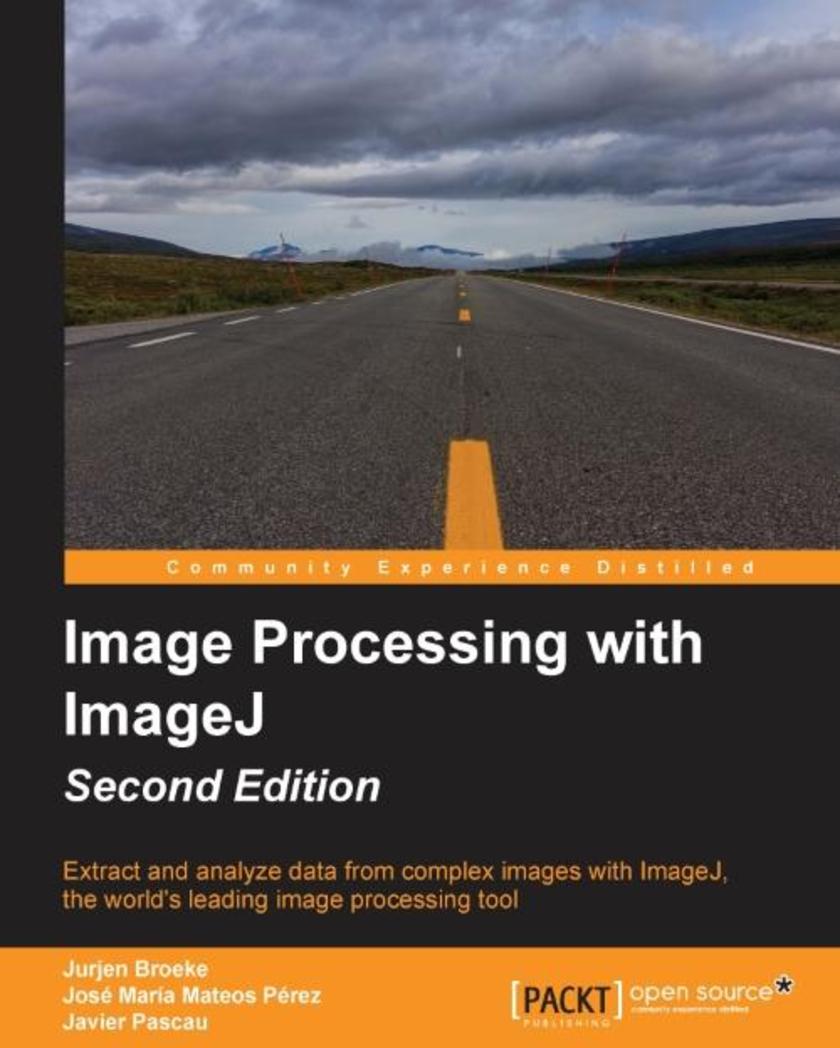
Image Processing with ImageJ - Second Edition
¥71.93
Extract and analyze data from complex images with ImageJ, the world’s leading image processing tool About This Book Design automated image-processing solutions and speed up image-processing tasks with ImageJ Create quality and intuitive interfaces for image processing by developing a basic framework for ImageJ plugins. Tackle even the most sophisticated datasets and complex images Who This Book Is For The book has been created for engineers, scientists, and developers eager to tackle image processing with one of the leading tools available. No prior knowledge of ImageJ is needed. Familiarity with Java programming will be required for readers to code their own routines using ImageJ. What You Will Learn Install and set up ImageJ for image processing. Process images using ImageJ’s built-in tools Create macros to perform repetitive processing tasks Set up and use an integrated development environment for ImageJ plugins Create plugins with a user-friendly interface for processing Use established ImageJ plugins for processing and quantification Generate a simple interface based on a real world example and create other interfaces for other projects Speed up interface development by setting multiple parameters interactively In Detail Advances in image processing have been vital for the scientific and technological communities, making it possible to analyze images in greater detail than ever before. But as images become larger and more complex, advanced processing techniques are required. ImageJ is built for the modern challenges of image processing – it’s one of the key tools in its development, letting you automate basic tasks so you can focus on sophisticated, in depth analysis. This book demonstrates how to put ImageJ into practice. It outlines its key features and demonstrates how to create your own image processing applications using macros and ImageJ plugins. Once you’ve got to grips with the basics of ImageJ, you’ll then discover how to build a number of different image processing solutions. From simple tasks to advanced and automated image processing, you’ll gain confidence with this innovative and powerful tool – however and whatever you are using it for. Style and approach A step-by-step guide to image processing and developing macros and plugins in ImageJ. The book will progress from using the built-in tools to macros and finally plugins for image processing.
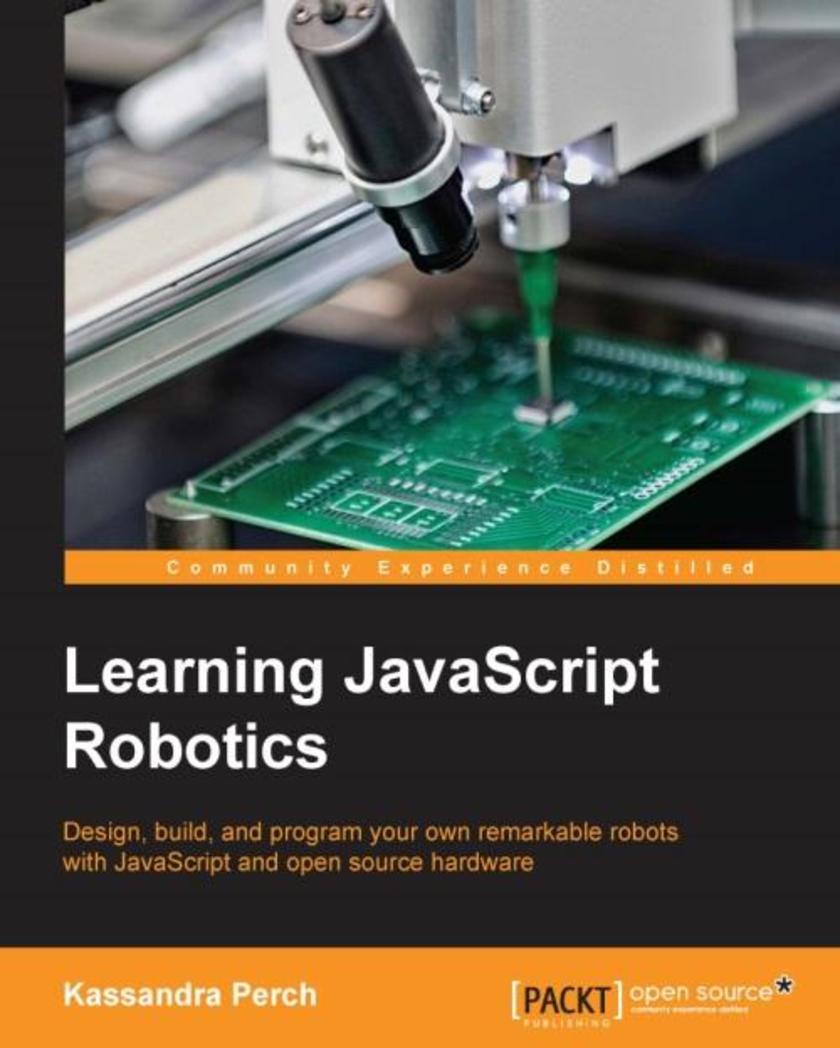
Learning JavaScript Robotics
¥54.49
Design, build, and program your own remarkable robots with JavaScript and open source hardware About This Book Learn how to leverage Johnny-Five's Read, Eval, Print Loop, and Event API to write robot code with JavaScript Unlock a world of exciting possibilities by hooking your JavaScript-programmed robots up to the internet and using external data and APIs Move your project code from the Arduino Uno to a multitude of other robotics platforms Who This Book Is For If you've worked with Arduino before or are new to electronics and would like to try writing sketches in JavaScript, then this book is for you! Basic knowledge of JavaScript and Node.js will help you get the most out of this book. What You Will Learn Familiarise yourself with Johnny-Five Read, Eval, and Print Loop (REPL) to modify and debug robotics code in real time Build robots with basic output devices to create projects that light up, make noise, and more Create projects with complex output devices, and employ the Johnny-Five API to simplify the use of components that require complex interfaces, such as I2C Make use of sensors and input devices to allow your robotics projects to survey the world around them and accept input from users Use the Sensor and Motor objects to make it much easier to move your robotics projects Learn about the Animation API that will allow you to program complex movements using timing and key frames Bring in other devices to your Johnny-Five projects, such as USB devices and remotes Connect your Johnny-Five projects to external APIs and create your own Internet of Things! In Detail There has been a rapid rise in the use of JavaScript in recent times in a variety of applications, and JavaScript robotics has seen a rise in popularity too. Johnny-Five is a framework that gives NodeBots a consistent API and platform across several hardware systems. This book walks you through basic robotics projects including the physical hardware builds and the JavaScript code for them. You'll delve into the concepts of Johnny-Five and JS robotics. You'll learn about various components such as Digital GPIO pins, PWM output pins, Sensors, servos, and motors to be used with Johnny-Five along with some advanced components such as I2C, and SPI. You will learn to connect your Johnny-Five robots to internet services and other NodeBots to form networks. By the end of this book, you will have explored the benefits of the Johnny-Five framework and the many devices it unlocks. Style and approach This step-by-step guide to the Johnny-Five ecosystem is explained in a conversational style, packed with examples and tips. Each chapter also explores the Johnny-Five documentation to enable you to start exploring the API on your own.
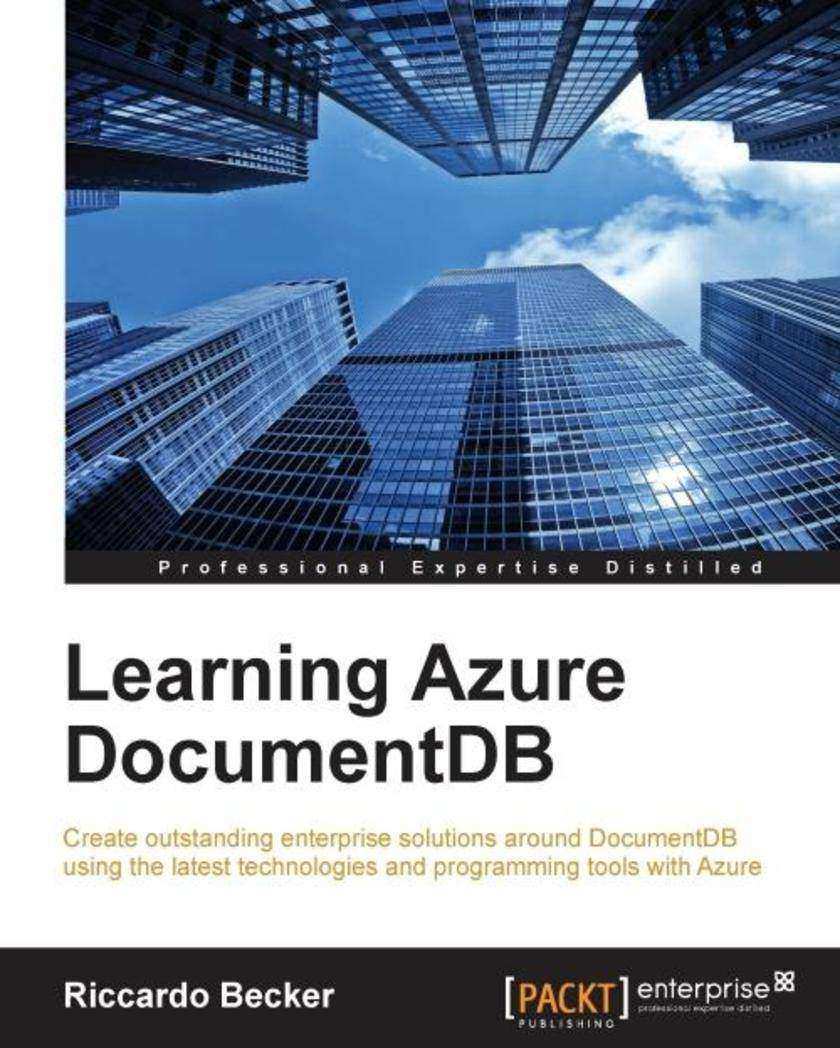
Learning Azure DocumentDB
¥63.21
Create outstanding enterprise solutions around DocumentDB using the latest technologies and programming tools with Azure About This Book Get to know the concepts of DocumentDB and learn to work your way around it Manipulate and query your documents using different modern technologies to access DocumentDB Build a real-life scenario using Microsoft Visual Studio and C# with this handy and practical guide Who This Book Is For This book is for novice developers and database architects who need a thorough knowledge of the features of DocumentDB and developing applications with it. Basic knowledge of SQL would be helpful. What You Will Learn Create, manage, and configure your DocumentDB environment Execute SQL queries from simple to complex and nested ones against your database Get to know about advanced DocumentDB techniques such as scopes, portioning, indexing, triggers, UDF’s, and security Fine-tune your DocumentDB database to optimize performance and costs Interact with DocumentDB from different technologies and platforms Build a real-life scenario using C# and put DocumentDB at the heart of Azure solutions Understand how to migrate from your current datastore to DocumentDB In Detail Learning DocumentDB adopts a practical, step-by-step approach to help you learn the basics of DocumentDB and use your new-found abilities in real-life scenarios and enterprise solutions. We start with the absolute basics, such as setting up a DocumentDB environment, and guide you through managing your databases, and executing simple and complex queries. Next, we explain how to work with DocumentDB using the open REST protocol, and demonstrate how JavaScript works with DocumentDB. We’ll also show you how to authenticate and execute queries. Moving on, you’ll find out how to use DocumentDB from within Node.js to kick-start your Node.js projects. Next, you’ll discover how to increase the performance of your DocumentDB database and fine-tune it. Finally, you’ll get to grips with using DocumentDB in conjunction with other services offered from the Microsoft Azure platform. Style and approach This book can be used as a tutorial where you learn step by step, but also as a knowledge base to quickly look up recipes you can instantly utilize. Starting with the basics and moving on to advanced topics, every concept is explained in theory and demonstrated through easy-to-understand examples.
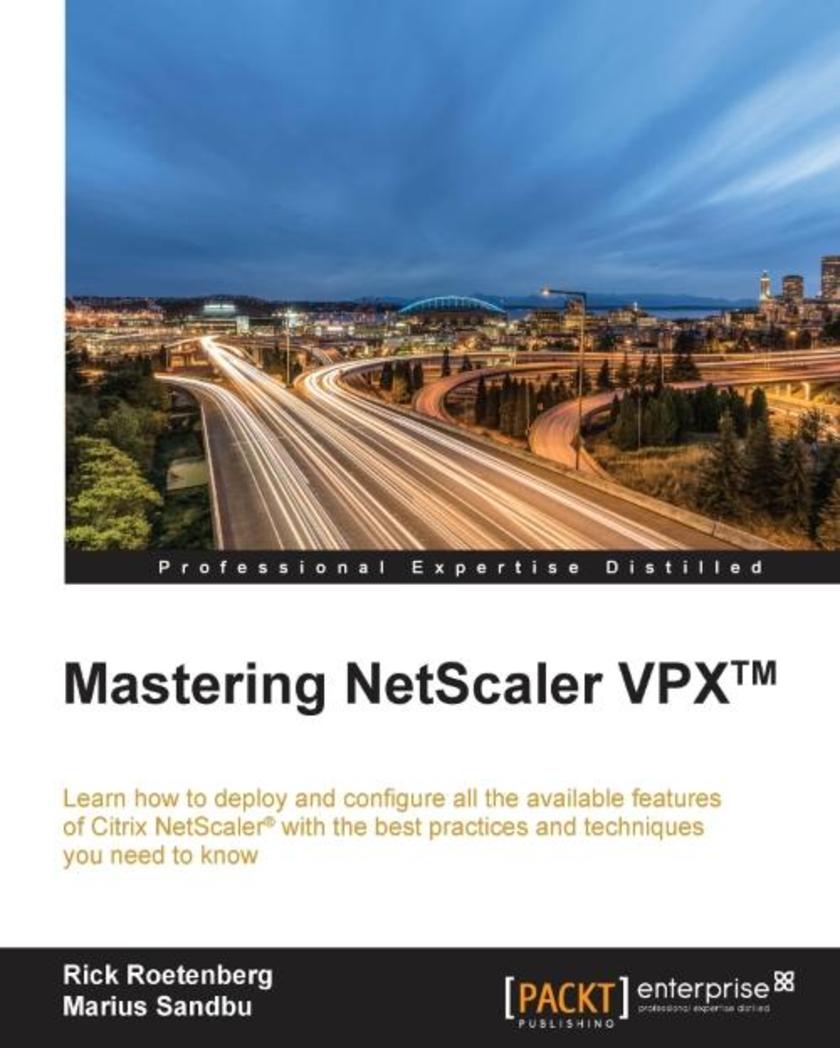
Mastering NetScaler VPX?
¥80.65
Learn how to deploy and configure all the available Citrix NetScaler features with the best practices and techniques you need to know About This Book Implement and configure all the available NetScaler Application Delivery features and monitor NetScaler VPX performance in your environment Packed with real-word NetScaler deployment scenarios to help you see the configuration principles in action Integrate NetScaler with other Citrix technologies, including CloudBridge, Application Delivery Controller, HDX Insight, and Command Center Who This Book Is For If you’re an administrator with prior experience using NetScaler then you have everything you need to make the most of this book. What You Will Learn Configure the more commonly used NetScaler VPX features such as basic load balancing, authentication, NetScaler Gateway, and StoreFront Configure the AppExpert features such as Responder, Rewrite, AppExpert templates, parsing HTTP, TCP, and UDP data Integrate NetScaler with other Citrix technologies such as CloudBridge, Insight Center, and Command Center Optimize traffic using caching, front-end optimization, and compression Dive deep in the security, caching, and compression enhancements Protect your environment with AAA and Application Firewall, or from HTTP DDoS attacks Troubleshoot an environment using tools such as TaaS and WireShark In Detail Citrix NetScaler is one of the best Application Delivery Controller products in the world. The Application Delivery Controllers are commonly used for load balancing purposes, to optimize traffic, and to perform extra security settings. This book will give you an insight into all the available features that the Citrix NetScaler appliance has to offer. The book will start with the commonly used NetScaler VPX features, such as load balancing and NetScaler Gateway functionality. Next, we cover features such as Responder, Rewrite, and the AppExpert templates, and how to configure these features. After that, you will learn more about the other available Citrix technologies that can interact with Citrix NetScaler. We also cover troubleshooting, optimizing traffic, caching, performing protection using Application Firewall, and denying HTTP DDoS attacks for web services. Finally, we will demonstrate the different configuration principles real-world Citrix NetScaler deployment scenarios. Style and approach This easy-to-follow guide explains as much as possible about each feature and its configuration. Each topic is explained sequentially in the process of configuring and deploying the feature.
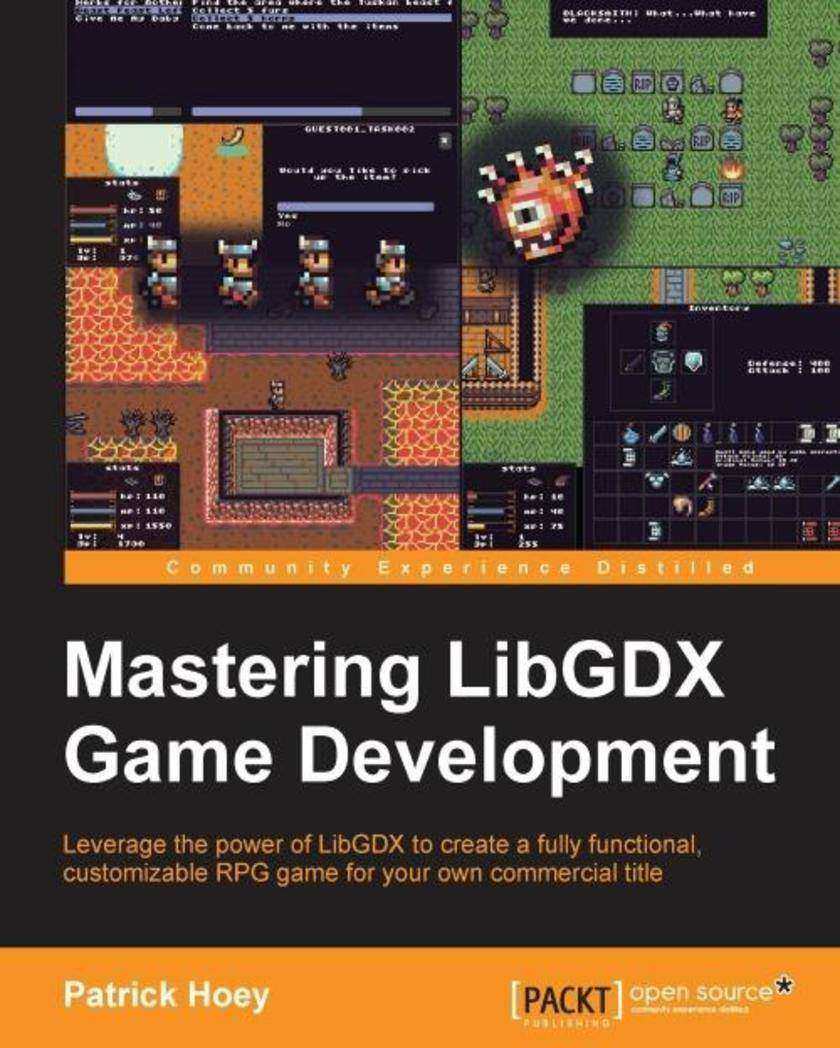
Mastering LibGDX Game Development
¥90.46
Leverage the power of LibGDX to create a fully functional, customizable RPG game for your own commercial title About This Book Learn game architecture and design patterns with concrete examples using proper software engineering principles Save time and money with this handy reference guide for future game development with LibGDX Design and develop a fully functional RPG video game from scratch with a hands on, step-by-step approach using LibGDX Who This Book Is For If you are an intermediate-level game developer who wants to create an RPG video game but found the creation process overwhelming, either by lack of tutorials or by getting lost in a sea of game-related technologies, engines, or frameworks, then this book is for you. This book assumes familiarity with Java and some basic knowledge of LibGDX. What You Will Learn Develop characters with stat attributes, player movement, animation, physics, and collision detection Create interactive NPC characters with speech windows and build immersion via dialog trees Build inventory management system UIs with drag and drop items to sell, buy, and equip Design a quest system to expand out the content of your game Form interesting enemies with battle mechanics and spawn points Devise *ed cutscenes to add an element of story and drama Develop save and load game profiles Create special effects to give the game extra “juiciness” and polish, and help build the atmosphere In Detail LibGDX is a Java-based framework developed with a heavy emphasis on performance, and includes cross-platform support out of the box (Windows, OS X, Linux, iOS, Android, and HTML5) as well as providing all the low-level functionality so that you can focus on developing your game and not battling with the platform. LibGDX also has an engaged and responsive community, active maintenance, and is available for free without a prohibitive license. Starting from the beginning, this book will take you through the entire development process of creating an RPG video game using LibGDX. First, this book will introduce you to the features specific to RPG games, as well as an overview of game architecture. Then, you will create map locations, develop character movement, add animation, integrate collision detection, and develop a portal system. Next, you will learn and develop a HUD and other UI components, as well as an inventory management system. You will then develop NPC interactions including dialog trees, shopkeepers, and quest givers. After this, you will design and create battle features for fighting enemies, as well as event triggers for world events. Finally, you will add the final polish with sound, music, and lighting effects. By the end of this book, you will have learned and applied core components from the LibGDX framework, as well as have a finished game to use as a springboard for customization and story development for your own commercial video game. Style and approach This book walks you through the concepts and implementation of developing a complete RPG game, unfolding chapter by chapter and building upon previous concepts. Each chapter can be used as an individual reference with diagrams to explain core concepts with concrete example code explained in detail.
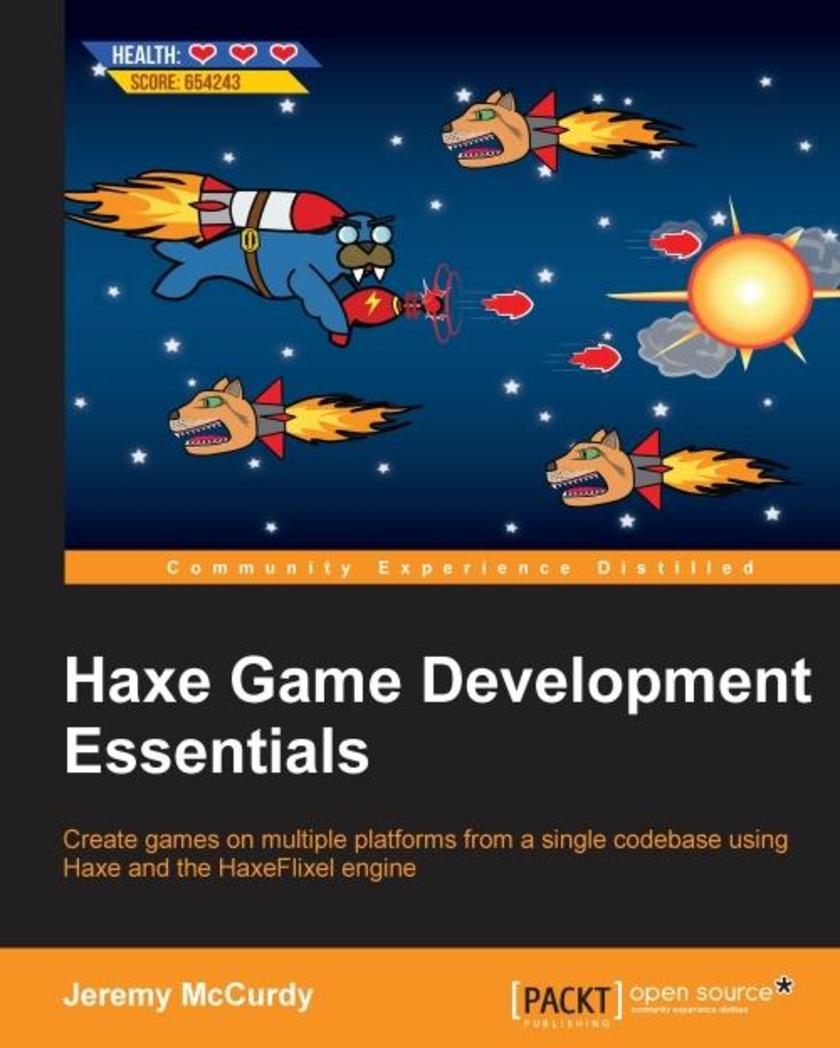
Haxe Game Development Essentials
¥54.49
Create games on multiple platforms from a single codebase using Haxe and the HaxeFlixel engine About This Book Learn the modern, cross-platform language Haxe to build games without any trouble Create engaging 2D games that are compatible with desktop, web, and mobile platforms Learn how to speed up your workflow with OpenFL and HaxeFlixel using this useful and compact guide Who This Book Is For This book is for game developers with some experience programming games on one or more platforms already. If you want to leverage your game development experience on one platform to develop for multiple platforms and to get up and running quickly, this book is for you. Having prior experience with a language similar to Haxe, such as ActionScript or JavaScript will help, but isn't required. What You Will Learn Understand the fundamentals of the Haxe programming language Set up a development environment that will work on Windows, Mac, and Linux Create fun 2D games using OpenFL and HaxeFlixel Understand how to implement a user interface Enhance the gameplay experience with cool animations Improve immersion by adding sound Make your game modular and easily expandable using configuration files Compile games that will work on desktop, web, and mobile platforms In Detail Haxe is a powerful and high-level multi-platform language that's incredibly easy to learn. Used by thousands of developers and many high-profile companies, Haxe is quickly emerging as a forerunner in the area of cross-platform programming. OpenFL builds on top of Haxe to make developing for multiple platforms quick and painless. HaxeFlixel provides you with the tools you need to build amazing 2D games easier than ever before. Cross-platform development has been supercharged using the Haxe programming language, making it increasingly easy and hassle-free to develop multi-platform games. If you've programmed games before and want to learn out how to deliver games across multiple platforms, or develop games faster, then Haxe Game Development Essentials is the book for you. It starts by showing you how to set up your development environment, then running you through some Haxe language fundamentals, and finally taking you through the process of programming a game from start to finish. You will learn how to create a side scrolling shooter game using HaxeFlixel. Next you will learn to enhance the game with new gameplay features, user interfaces, animations, sound, and configuration files to make your game expandable. Once your game is built and ready, you will learn how to deploy it to web, Android, iOS, and desktop systems. By the end of this book, you will be confident about creating multi-platform games using Haxe, OpenFL, and HaxeFlixel in a faster and easier way. Style and approach Since this book is aimed at people who have worked on games before, this book is written in a way that will get you quickly up to speed with a new set of tools, but will still be accessible for less experienced developers. Each chapter covers an essential milestone in building a game from start to finish. The chapters move in a logical fashion, starting with the basics of Haxe development and ending with preparing a game for deployment.
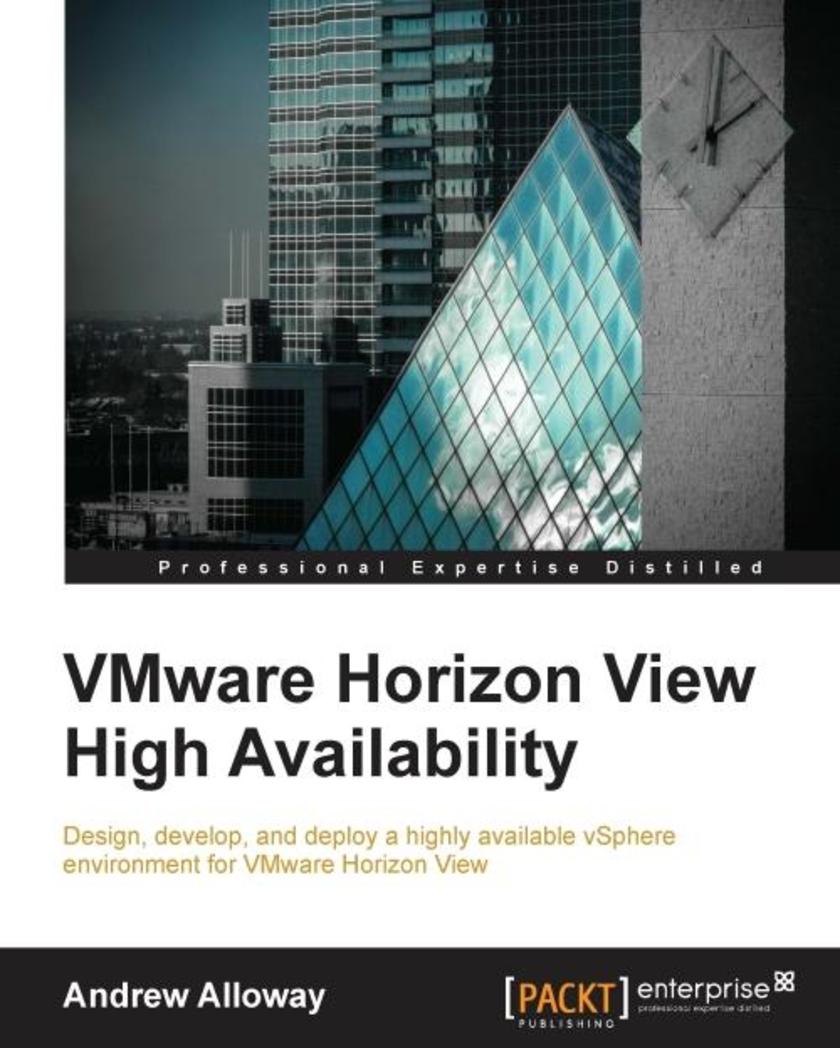
VMware Horizon View High Availability
¥80.65
Design, develop and deploy a highly available vSphere environment for VMware Horizon View About This Book Enhance your capability of meeting various Service Level Agreements in VMware Horizon View Get acquainted through all the necessary considerations for building a View environment Cover VMware High Availability hurdle by hurdle along with the checklists for verification of the environment being ready for production Who This Book Is For If you manage, plan or deploy VMware Horizon View or are looking for tips for best practices and configuration details this book is for you. This book is intended for administrators who design and deploy VMware Horizon View or administrators who are looking for ways to improve their existing View environment. What You Will Learn Install and configure a VMware Horizon View Connection Server and redundant pair Discover the networking requirements for View and learn how to build redundancy into your network Analyze each of the View user pool types and how each one can be made highly available and survivable. Get to know about storage protocols such as NFS, iSCSI and Fibre Channel Deploy Virtual SAN, and find out how to effectively couple Virtual SAN with View Learn about View monitoring tools to allow fast responses to various crises Plan, analyze and upgrade VMware Horizon View Analyze network services required for VMware Horizon View and build them in a redundant manner In Detail The increasing movement to virtualize workloads and workstations has put VMware Horizon View into a central mission critical role in many environments. Administrators may be overwhelmed with planning for outages and dealing with failure scenarios. It’s easy to miss small details that will result in outages down the road. Following VMware Horizon View best practices and planning ahead with network infrastructure will allow you to avoid these common pit falls. This book will walk you through the setup and configuration of View in a highly available configuration. It will provide you with the skills to analyze and deploy configurations that can stand up to rigorous failure standards. The book starts with deploying and basic configuration of VMware Horizon View in a redundant setup, then moves on to cover high availability for networking, fibre channel, NFS, and iSCSI. We finish this book with monitoring and upgrade planning. At the end we also learn about maintaining the uptime and minimizing the downtime that can be caused due to various factors. Each topic comes with a list of best practices and failure scenarios to test. Administrators will learn the intricacies of protecting a View environment. Style and approach This book provides configuration and installation steps for administration and installation of a Horizon View server. It includes high-level overviews of any protocols, services used by Horizon View, and best practices and high availability checklists for each chapter.
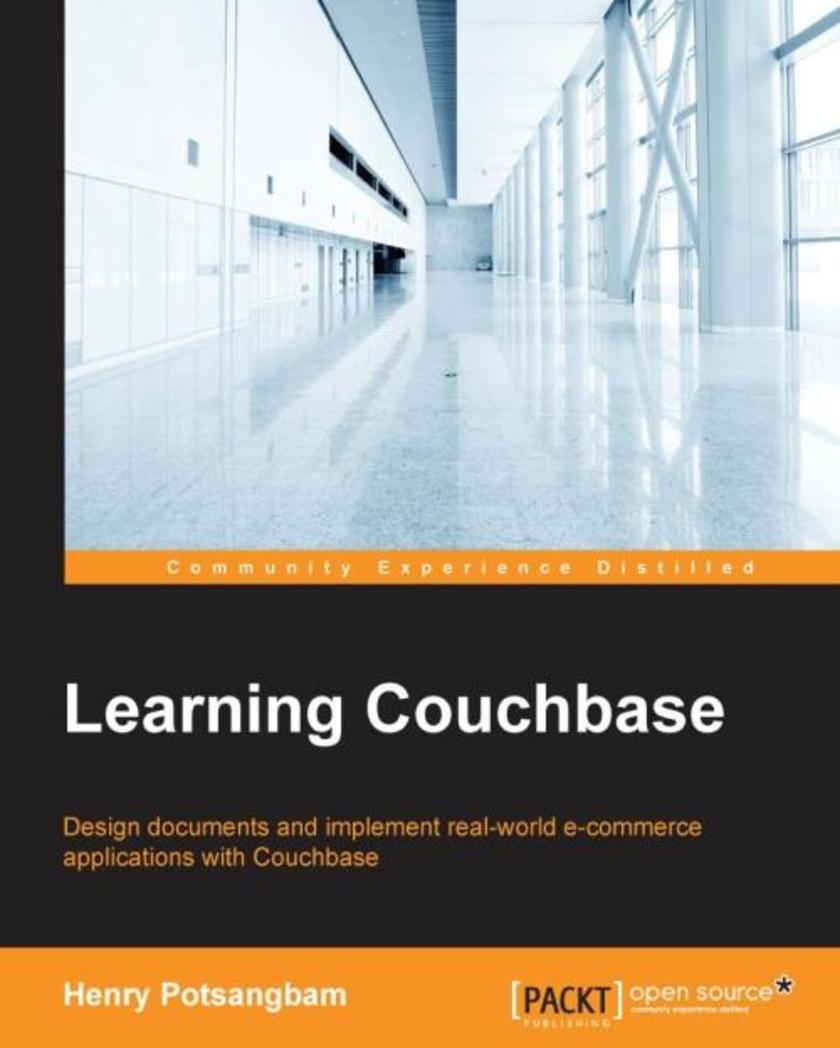
Learning Couchbase
¥80.65
Design documents and implement real world e-commerce applications with Couchbase About This Book Get acquainted with Couchbase architecture and design your document-based data schema Implement full text search using industry standard elastic search plugins Develop critical and high performance applications using this hands-on tutorial guide Who This Book Is For If you are new to the NoSQL document system or have little or no experience in NoSQL development and administration and are planning to deploy Couchbase for your next project, then this book is for you. It would be helpful to have a bit of familiarity with Java. What You Will Learn Get acquainted with the concept of NoSQL databases and configure your Couchbase database cluster Maintain Couchbase effectively using the web-based administrative console with ease Enable partition capabilities by making use of Buckets Analyze important design considerations for maintaining relationship between various documents Use Couchbase SDK Java API to store and retrieve document Write views using map/reduce to retrieve documents efficiently Get familiar with N1QL and how to use it in Java applications Integrate Couchbase with Elasticsearch to implement full text search Configure XDCR for disaster recovery and develop ecommerce application using Couchbase In Detail This book achieves its goal by taking up an end-to-end development structure, right from understanding NOSQL document design to implementing full fledged eCommerce application design using Couchbase as a backend. Starting with the architecture of Couchbase to get you up and running, this book quickly takes you through designing a NoSQL document and implementing highly scalable applications using Java API. You will then be introduced to document design and get to know the various ways to administer Couchbase. Followed by this, learn to store documents using bucket. Moving on, you will then learn to store, retrieve and delete documents using smart client base on Java API. You will then retrieve documents using SQL like syntax call N1QL. Next, you will learn how to write map reduce base views. Finally, you will configure XDCR for disaster recovery and implement an eCommerce application using Couchbase. Style and approach The book starts from absolute basics and slowly moves to more advanced topics ensuring at every step that all concepts and terms are understood by the reader to have complete understanding at every stage. Technical and complex terms are explained in clear and simple language, thus making this book a perfect companion for those who have started their journey to NoSQL using Couchbase
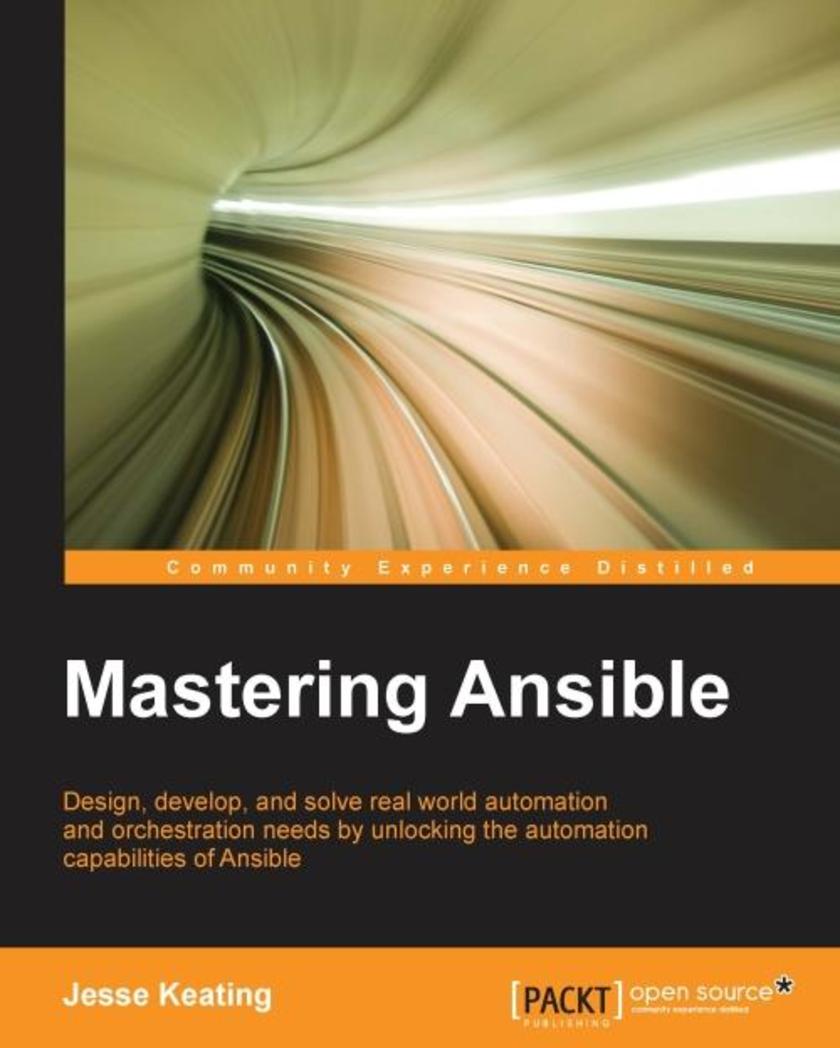
Mastering Ansible
¥71.93
Design, develop, and solve real world automation and orchestration needs by unlocking the automation capabilities of Ansible About This Book Discover how Ansible works in detail Explore use cases for Ansible’s advanced features including task delegation, fast failures, and serial task execution Extend Ansible with custom modules, plugins, and inventory sources Who This Book Is For This book is intended for Ansible developers and operators who have an understanding of the core elements and applications but are now looking to enhance their skills in applying automation using Ansible. What You Will Learn Understand Ansible’s code and logic flow Safeguard sensitive data within Ansible Access and manipulate complex variable data within Ansible playbooks Handle task results to manipulate change and failure definitions Organize Ansible content into a simple structure Craft a multi-tier rollout playbook utilizing load balancers and manipulating your monitoring system Utilize advanced Ansible features to orchestrate rolling updates with almost no service disruptions Troubleshoot Ansible failures to understand and resolve issues Extend Ansible with custom modules, plugins, or inventory sources In Detail Automation is critical to success in the world of DevOps. How quickly and efficiently an application deployment can be automated, or a new infrastructure can be built up, can be the difference between a successful product or a failure. Ansible provides a simple yet powerful automation engine. Beyond the basics of Ansible lie a host of advanced features which are available to help you increase efficiency and accomplish complex orchestrations with ease. This book provides you with the knowledge you need to understand how Ansible works at a fundamental level and leverage its advanced capabilities. You'll learn how to encrypt Ansible content at rest and decrypt data at runtime. You will master the advanced features and capabilities required to tackle the complex automation challenges of today and beyond. You will gain detailed knowledge of Ansible workflows, explore use cases for advanced features, craft well thought out orchestrations, troubleshoot unexpected behaviour, and extend Ansible through customizations. Finally, you will discover the methods used to examine and debug Ansible operations, helping you to understand and resolve issues. Style and approach A clear, practical guide that covers best practise, system architecture and design aspects that will help you master Ansible with ease.

Xamarin Mobile Development for Android Cookbook
¥90.46
Over 80 hands-on recipes to unleash full potential for Xamarin in development and monetization of feature-packed, real-world Android apps About This Book Create a number of Android applications using the Xamarin Android platform Extensively integrate your Android devices with other Android devices to enhance your app creation experience A comprehensive guide packed with real-world scenarios and pro-level practices and techniques to help you build successful Android apps Who This Book Is For If you are a Xamarin developer who wants to create complete Android applications with Xamarin, then this book is ideal for you. No prior knowledge of Android development is needed, however a basic knowledge of C# and .NET would be useful. What You Will Learn Install and use Xamarin.Android with Xamarin Studio and Visual Studio Design an app’s user interface for multiple device configurations Store and protect data in databases, files, and on the cloud Utilize lists and collections to present data to the user Communicate across the network using NFC or Bluetooth Perform tasks in the background and update the user with notifications Capture and play multimedia, such as video and audio, with the camera Implement In-App Billing and Expansion Files and deploy to the store In Detail Xamarin is used by developers to write native iOS, Android, and Windows apps with native user interfaces and share code across multiple platforms not just on mobile devices, but on Windows, Mac OS X, and Linux. Developing apps with Xamarin.Android allows you to use and re-use your code and your skills on different platforms, making you more productive in any development. Although it’s not a write-once-run-anywhere framework, Xamarin provides native platform integration and optimizations. There is no middleware; Xamarin.Android talks directly to the system, taking your C# and F# code directly to the low levels. This book will provide you with the necessary knowledge and skills to be part of the mobile development era using C#. Covering a wide range of recipes such as creating a simple application and using device features effectively, it will be your companion to the complete application development cycle. Starting with installing the necessary tools, you will be guided on everything you need to develop an application ready to be deployed. You will learn the best practices for interacting with the device hardware, such as GPS, NFC, and Bluetooth. Furthermore, you will be able to manage multimedia resources such as photos and videos captured with the device camera, and so much more! By the end of this book, you will be able to create Android apps as a result of learning and implementing pro-level practices, techniques, and solutions. This book will ascertain a seamless and successful app building experience. Style and approach This book employs a step-by-step approach to Android app creation, explained in a conversational and easy-to-follow style. A wide range of examples are listed to ensure a complete understanding of how to deploy competent apps on the Android market.

Python Data Visualization Cookbook - Second Edition
¥80.65
Over 70 recipes to get you started with popular Python libraries based on the principal concepts of data visualization About This Book Learn how to set up an optimal Python environment for data visualization Understand how to import, clean and organize your data Determine different approaches to data visualization and how to choose the most appropriate for your needs Who This Book Is For If you already know about Python programming and want to understand data, data formats, data visualization, and how to use Python to visualize data then this book is for you. What You Will Learn Introduce yourself to the essential tooling to set up your working environment Explore your data using the capabilities of standard Python Data Library and Panda Library Draw your first chart and customize it Use the most popular data visualization Python libraries Make 3D visualizations mainly using mplot3d Create charts with images and maps Understand the most appropriate charts to describe your data Know the matplotlib hidden gems Use plot.ly to share your visualization online In Detail Python Data Visualization Cookbook will progress the reader from the point of installing and setting up a Python environment for data manipulation and visualization all the way to 3D animations using Python libraries. Readers will benefit from over 60 precise and reproducible recipes that will guide the reader towards a better understanding of data concepts and the building blocks for subsequent and sometimes more advanced concepts. Python Data Visualization Cookbook starts by showing how to set up matplotlib and the related libraries that are required for most parts of the book, before moving on to discuss some of the lesser-used diagrams and charts such as Gantt Charts or Sankey diagrams. Initially it uses simple plots and charts to more advanced ones, to make it easy to understand for readers. As the readers will go through the book, they will get to know about the 3D diagrams and animations. Maps are irreplaceable for displaying geo-spatial data, so this book will also show how to build them. In the last chapter, it includes explanation on how to incorporate matplotlib into different environments, such as a writing system, LaTeX, or how to create Gantt charts using Python. Style and approach A step-by-step recipe based approach to data visualization. The topics are explained sequentially as cookbook recipes consisting of a code snippet and the resulting visualization.
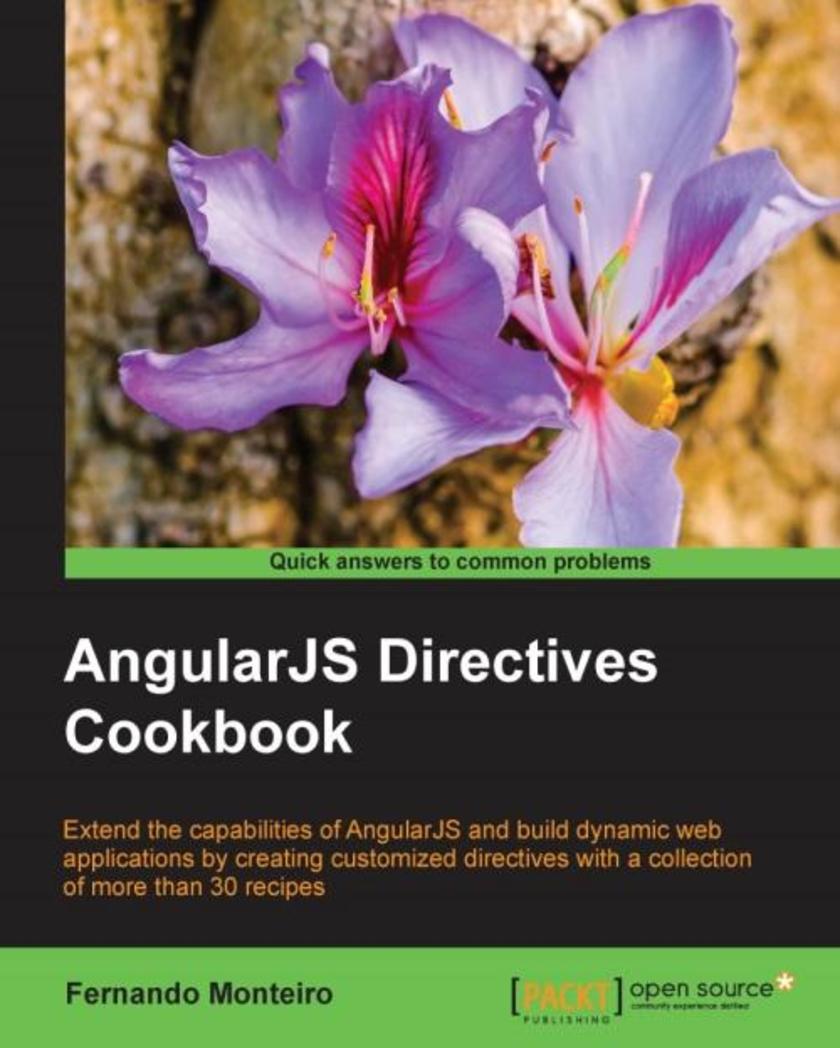
AngularJS Directives Cookbook
¥71.93
Extend the capabilities of AngularJS and build dynamic web applications by creating customized directives with this selection of more than 30 recipes About This Book Learn how to extend HTML templates in new ways to build even better web applications with exceptional interface components Build reusable directives for large-scale AngularJS applications Create even sophisticated and impressive modern web apps with ease Who This Book Is For This book is for developers with AngularJS experience who want to extend their knowledge to create or customize directives in any type of AngularJS application. Some experience of modern tools such as Yeoman and Bower would be helpful, but is not a requirement. What You Will Learn Build and customize external HTML templates, and create simple, effective directives for common interface components Learn how to use Controller function and any Bootstrap UI directives to manipulate the DOM and how to transform any UI library into AngularJS directives Construct an AngularJS application to use shared components and validate your HTML5 Discover how to use jQuery events and manipulate the DOM using jQuery UI inside AngularJS applications Create custom directives for ongoing projects using Yeoman generators, and find out how to implement standalone directives Build reusable directives for Large AngularJS applications and extend directives to use dynamic templates Write unit test for directives using the Karma runner and Jasmine’s behavior-driven development framework In Detail AngularJS directives are at the center of what makes it such an exciting – and important - web development framework. With directives, you can take greater control over HTML elements on your web pages – they ‘direct’ Angular’s HTML compiler to behave in the way you want it to. It makes building modern web applications a much more expressive experience, and allows you to focus more closely on improving the way that user interaction impacts the DOM and the way your app manages data. If you’re already using Angular, you probably recognize the power of directives to transform the way you understand and build your projects – but customizing and creating your own directives to harness AngularJS to its full potential can be more challenging. This cookbook shows you how to do just that – it’s a valuable resource that demonstrates how to use directives at every stage in the workflow. Packed with an extensive range of solutions and tips that AngularJS developers shouldn’t do without, you’ll find out how to make the most of directives. You’ll find recipes demonstrating how to build a number of different user interface components with directives, so you can take complete control over how users interact with your application. You’ll also learn how directives can simplify the way you work by creating reusable directives – by customizing them with Yeoman you can be confident that you’re application has the robust architecture that forms the bedrock of the best user experiences. You’ll also find recipes that will help you learn how to unit test directives, so you can be confident in the reliability and performance of your application. Whether you’re looking for guidance to dive deeper into AngularJS directives, or you want a reliable resource, relevant to today’s web development challenges, AngularJS Directives Cookbook delivers everything you need in an easily accessible way. Style and approach This book easy-to-follow guide is packed with hands-on recipes to help you build modular AngularJS applications with custom directives. It presents tips on using the best tools and various ways to use these tools for front-end development.
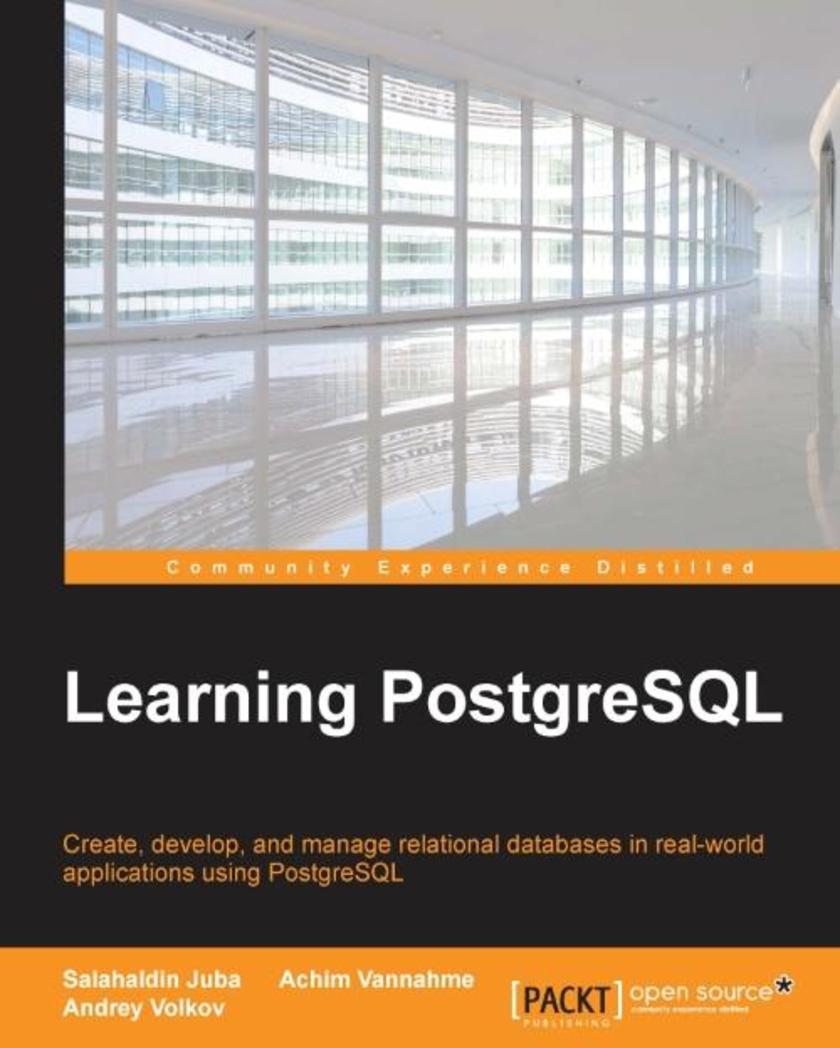
Learning PostgreSQL
¥99.18
Create, develop and manage relational databases in real world applications using PostgreSQL About This Book Learn about the PostgreSQL development life cycle including its testing and refactoring Build productive database solutions and use them in Java applications A comprehensive guide to learn about SQL, PostgreSQL procedural language and PL/pgSQL Who This Book Is For If you are a student, database developer or an administrator, interested in developing and maintaining a PostgreSQL database, then this book is for you. No knowledge of database programming or administration is necessary. Readers should, however, know SQL. What You Will Learn Learn concepts of data modelling and relation algebra Install and set up PostgreSQL database server and client software Implement data structures in PostgreSQL Manipulate data in the database using SQL Implement data processing logic in the database with stored functions, triggers and views Test database solutions and assess the performance Integrate database with Java applications Detailed knowledge of the main PostgreSQL building objects, most used extensions Practice database development life cycle including analysis, modelling, (documentation), testing, bug fixes and refactoring In Detail PostgreSQL is one of the most powerful and easy to use database management systems. It has strong support from the community and is being actively developed with a new release every year. PostgreSQL supports the most advanced features included in SQL standards. Also it provides NoSQL capabilities, and very rich data types and extensions. All that makes PostgreSQL a very attractive solution in various kinds of software systems. The book starts with the introduction of relational databases with PostegreSQL. It then moves on to covering data definition language (DDL) with emphasis on PostgreSQL and common DDL commands supported by ANSI SQL. You will then learn the data manipulation language (DML), and advanced topics like locking and multi version concurrency control (MVCC). This will give you a very robust background to tune and troubleshoot your application. The book then covers the implementation of data models in the database such as creating tables, setting up integrity constraints, building indexes, defining views and other schema objects. Next, it will give you an overview about the NoSQL capabilities of PostgreSQL along with Hstore, XML, Json and arrays. Finally by the end of the book, you'll learn to use the JDBC driver and manipulate data objects in the Hibernate framework. Style and approach An easy-to-follow guide to learn programming build applications with PostgreSQL, and manage a PostgreSQL database instance.
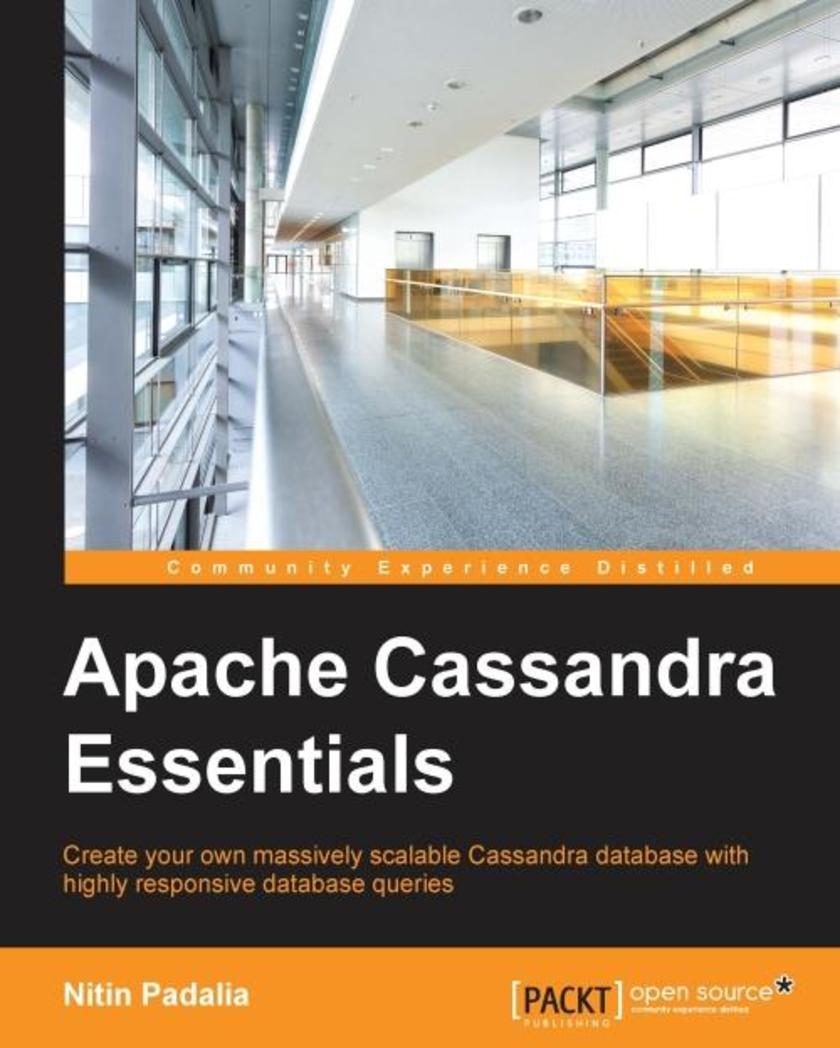
Apache Cassandra Essentials
¥63.21
Create your own massively scalable Cassandra database with highly responsive database queries About This Book Create a Cassandra cluster and tweak its configuration to get the best performance based on your environment Analyze the key concepts and architecture of Cassandra, which are essential to create highly responsive Cassandra databases A fast-paced and step-by-step guide on handling huge amount of data and getting the best out of your database applications Who This Book Is For If you are a developer who is working with Cassandra and you want to deep dive into the core concepts and understand Cassandra’s non-relational nature, then this book is for you. A basic understanding of Cassandra is expected. What You Will Learn Install and set up your Cassandra Cluster using various installation types Use Cassandra Query Language (CQL) to design Cassandra database and tables with various configuration options Design your Cassandra database to be evenly loaded with the lowest read/write latencies Employ the available Cassandra tools to monitor and maintain a Cassandra cluster Debug CQL queries to discover why they are performing relatively slowly Choose the best-suited compaction strategy for your database based on your usage pattern Tune Cassandra based on your deployment operation system environment In Detail Apache Cassandra Essentials takes you step-by-step from from the basics of installation to advanced installation options and database design techniques. It gives you all the information you need to effectively design a well distributed and high performance database. You’ll get to know about the steps that are performed by a Cassandra node when you execute a read/write query, which is essential to properly maintain of a Cassandra cluster and to debug any issues. Next, you’ll discover how to integrate a Cassandra driver in your applications and perform read/write operations. Finally, you’ll learn about the various tools provided by Cassandra for serviceability aspects such as logging, metrics, backup, and recovery. Style and approach This step-by-step guide is packed with examples that explain the core concepts as well as advanced concepts, techniques, and usages of Apache Cassandra.

Arduino for Secret Agents
¥54.49
Transform your tiny Arduino device into a secret agent gadget to build a range of espionage projects with this practical guide for hackers About This Book Discover the limitless possibilities of the tiny Arduino and build your own secret agent projects From a fingerprint sensor to a GPS Tracker and even a robot– learn how to get more from your Arduino Build nine secret agent projects using the power and simplicity of the Arduino platform Who This Book Is For This book is for Arduino programmers with intermediate experience of developing projects, and who want to extend their knowledge by building projects for secret agents. It would also be great for other programmers who are interested in learning about electronics and programming on the Arduino platform. What You Will Learn Get to know the full range of Arduino features so you can be creative through practical projects Discover how to create a simple alarm system and a fingerprint sensor Find out how to transform your Arduino into a GPS tracker Use the Arduino to monitor top secret data Build a complete spy robot! Build a set of other spy projects such as Cloud Camera and Microphone System In Detail Q might have Bond’s gadgets– but he doesn’t have an Arduino (not yet at least). Find out how the tiny Arduino microcomputer can be used to build an impressive range of neat secret agent projects that can help you go undercover and get to grips with the cutting-edge of the world of espionage with this book, created for ardent Arduino fans and anyone new to the powerful device. Each chapter shows you how to construct a different secret agent gadget, helping you to unlock the full potential of your Arduino and make sure you have a solution for every tricky spying situation. You’ll find out how to build everything from an alarm system to a fingerprint sensor, each project demonstrating a new feature of Arduino, so you can build your expertise as you complete each project. Learn how to open a lock with a text message, monitor top secret data remotely, and even create your own Arduino Spy Robot, Spy Microphone System, and Cloud Spy Camera This book isn’t simply an instruction manual – it helps you put your knowledge into action so you can build every single project to completion. Style and approach This practical reference guide shows you how to build various projects with step-by-step explanations on each project, starting with the assembly of the hardware, followed by basics tests of all those hardware components and finally developing project on the hardware.
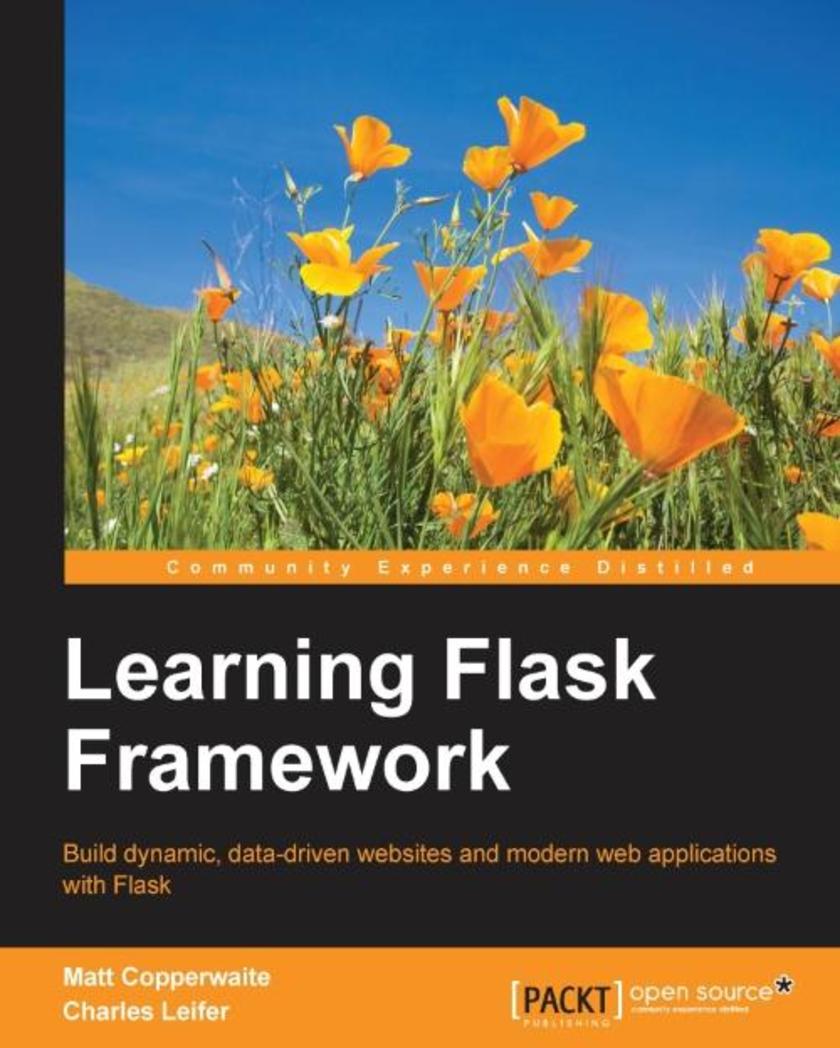
Learning Flask Framework
¥80.65
Build dynamic, data-driven websites and modern web applications with Flask About This Book Discover the most popular Flask resources on the web with ease Familiarize yourself with third-party libraries commonly used with Flask Create a fast, interactive, and secure web app with this hands-on guide Who This Book Is For This book is for anyone who wants to develop their knowledge of Python into something that can be used on the web. Flask follows the Python design principles and can be easily understood by anyone who knows Python, and even by those who do not. What You Will Learn Create your web pages to add modularity and flexibility to your web app using templates Store and retrieve relational data using SQLAlchemy Develop schema migrations with Alembic Produce an admin section using flask-admin Build RESTful APIs using Flask-Restless Simulate requests and sessions using the Flask test client Make Ajax requests from Jinja2 templates In Detail Flask is a small and powerful web development framework for Python. It does not presume or force a developer to use a particular tool or library. Flask supports extensions that can add application features as if they were implemented in Flask itself. Flask’s main task is to build web applications quickly and with less code. With its lightweight and efficient web development framework, Flask combines rapid development and clean, simple design. This book will take you through the basics of learning how to apply your knowledge of Python to the web. Starting with the creation of a “Hello world” Flask app, you will be introduced to the most common Flask APIs and Flask’s interactive debugger. You will learn how to store and retrieve blog posts from a relational database using an ORM and also to map URLs to views. Furthermore, you will walk through template blocks, inheritance, file uploads, and static assets. You will learn to authenticate users, build log in/log out functionality, and add an administrative dashboard for the blog. Moving on, you will discover how to make Ajax requests from the template and see how the Mock library can simplify testing complex interactions. Finally, you will learn to deploy Flask applications securely and in an automated, repeatable manner, and explore some of the most popular Flask resources on the web. Style and approach A comprehensive guide packed with real-world examples and popular use cases; starting with basic overviews and diving into the practical aspects of Flask Framework.
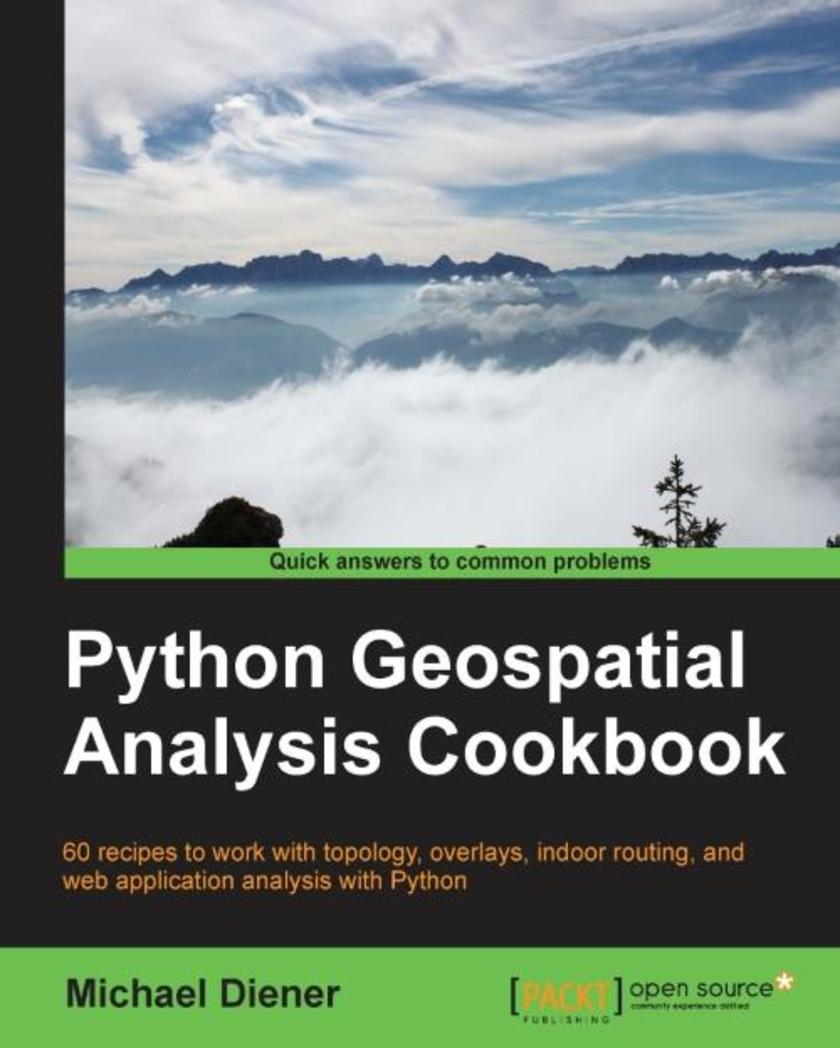
Python Geospatial Analysis Cookbook
¥90.46
Over 60 recipes to work with topology, overlays, indoor routing, and web application analysis with Python About This Book Explore the practical process of using geospatial analysis to solve simple to complex problems with reusable recipes Concise step-by-step instructions to teach you about projections, vector, raster, overlay, indoor routing and topology analysis Create a basic indoor routing application with geodjango Who This Book Is For If you are a student, teacher, programmer, geospatial or IT administrator, GIS analyst, researcher, or scientist looking to do spatial analysis, then this book is for you. Anyone trying to answer simple to complex spatial analysis questions will get a working demonstration of the power of Python with real-world data. Some of you may be beginners with GIS, but most of you will probably have a basic understanding of geospatial analysis and programming. What You Will Learn Discover the projection and coordinate system information of your data and learn how to transform that data into different projections Import or export your data into different data formats to prepare it for your application or spatial analysis Use the power of PostGIS with Python to take advantage of the powerful analysis functions Execute spatial analysis functions on vector data including clipping, spatial joins, measuring distances, areas, and combining data to new results Create your own set of topology rules to perform and ensure quality assurance rules in Python Find the shortest indoor path with network analysis functions in easy, extensible recipes revolving around all kinds of network analysis problems Visualize your data on a map using the visualization tools and methods available to create visually stunning results Build an indoor routing web application with GeoDjango to include your spatial analysis tools built from the previous recipes In Detail Geospatial development links your data to places on the Earth’s surface. Its analysis is used in almost every industry to answer location type questions. Combined with the power of the Python programming language, which is becoming the de facto spatial *ing choice for developers and analysts worldwide, this technology will help you to solve real-world spatial problems. This book begins by tackling the installation of the necessary software dependencies and libraries needed to perform spatial analysis with Python. From there, the next logical step is to prepare our data for analysis; we will do this by building up our tool box to deal with data preparation, transformations, and projections. Now that our data is ready for analysis, we will tackle the most common analysis methods for vector and raster data. To check or validate our results, we will explore how to use topology checks to ensure top-quality results. This is followed with network routing analysis focused on constructing indoor routes within buildings, over different levels. Finally, we put several recipes together in a GeoDjango web application that demonstrates a working indoor routing spatial analysis application. The round trip will provide you all the pieces you need to accomplish your own spatial analysis application to suit your requirements. Style and approach Easy-to-follow, step-by-step recipes, explaining from start to finish how to accomplish real-world tasks.




 购物车
购物车 个人中心
个人中心



